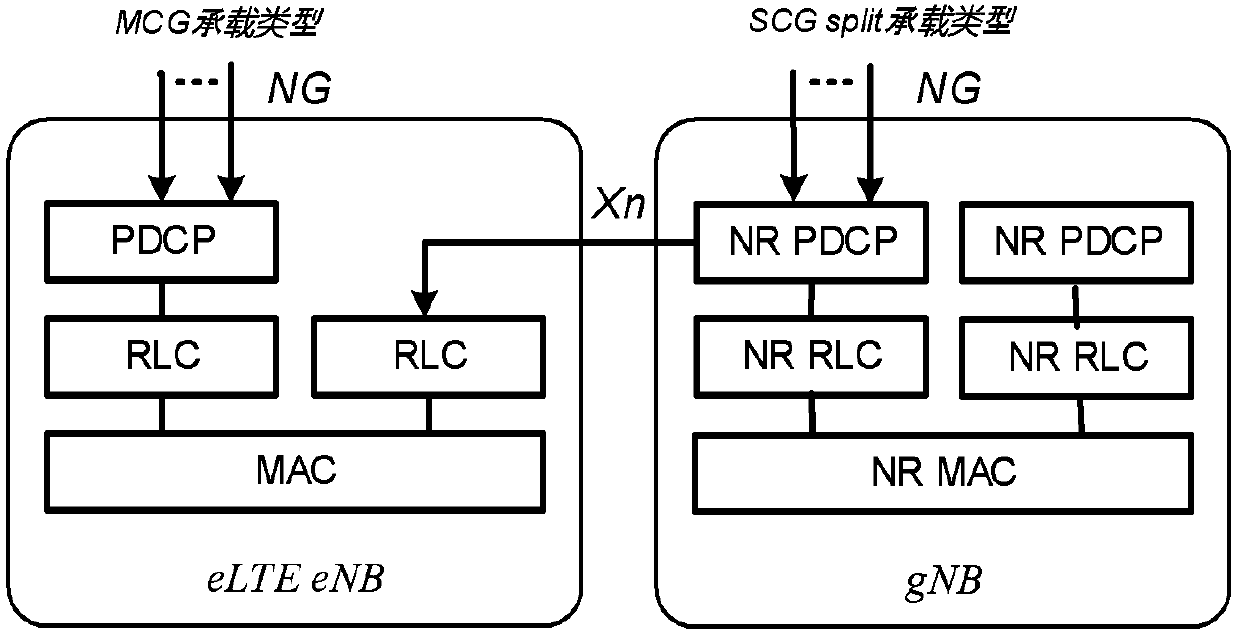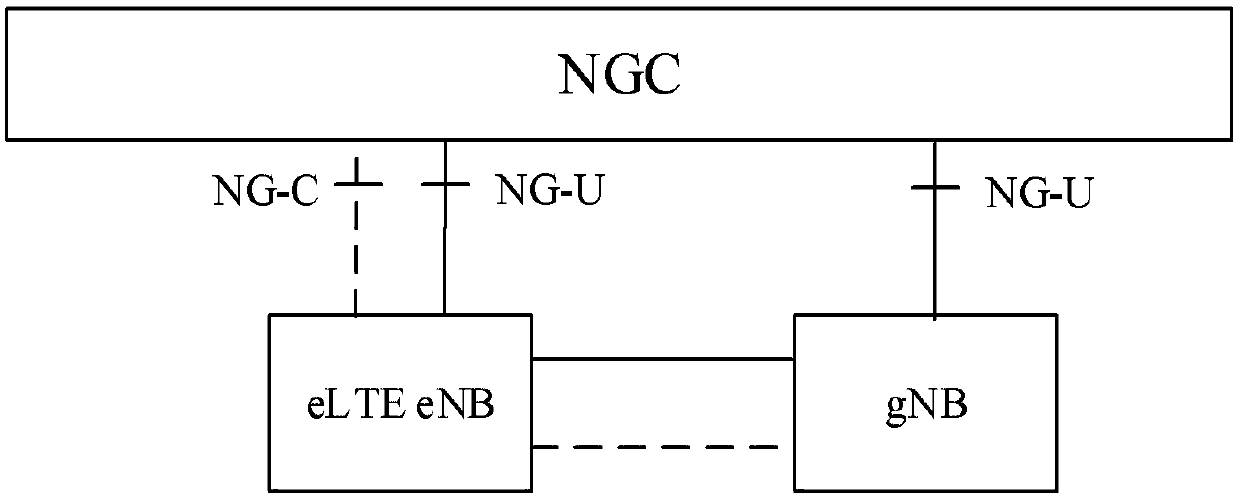Connection establishing method, auxiliary cell group (SCG) configuration request method and corresponding base stations
A technology that assists base stations and establishes requests. It is used in connection management, electrical components, wireless communications, etc., and can solve problems such as inability to support high-definition video, high-quality voice augmented reality, virtual reality, and limited ability to process spontaneously.
- Summary
- Abstract
- Description
- Claims
- Application Information
AI Technical Summary
Problems solved by technology
Method used
Image
Examples
Embodiment 1
[0087] The downlink data receiving address allocated by the primary base station for receiving downlink data from the secondary base station, and the ID of the DRB corresponding to the QoS Flow established on the secondary base station (for example, will be referred to later Figure 6 described exemplary embodiment 1); or
[0088] The downlink data receiving address assigned by the primary base station for receiving downlink data from the secondary base station (for example, will be referred to later Figure 7 Exemplary embodiment 2) described.
[0089] An identifier of a data radio bearer (DRB) that can be configured by the secondary base station. The identity of the DRB is uniformly managed and allocated by the primary base station. In the establishment request message of the secondary base station, the primary base station notifies the secondary base station of the identifier of the currently available DRB. Select one of them as the ID of the newly created DRB. Alternati...
Embodiment 1
[0107] In addition to the downlink data receiving address assigned by the primary base station for receiving downlink data from the secondary base station, and the identifier of the DRB corresponding to the QoS Flow that can be established on the secondary base station (for example, it will be referred to later Figure 6 described exemplary embodiment 1); or
[0108] The downlink data receiving address assigned by the primary base station for receiving downlink data from the secondary base station (for example, will be referred to later Figure 7 Exemplary embodiment 2) described.
[0109] An identifier of a data radio bearer (DRB) that can be configured by the secondary base station. The identity of the DRB is uniformly managed and allocated by the primary base station. In the establishment request message of the secondary base station, the primary base station notifies the secondary base station of the identifier of the currently available DRB. Select one of them as the ID...
Embodiment 1
[0251] In addition to the downlink data receiving address assigned by the primary base station for receiving downlink data from the secondary base station, and the identifier of the DRB corresponding to the QoS Flow that can be established on the secondary base station determined by the primary base station (for example, refer to Figure 6 described exemplary embodiment 1); or
[0252] The downlink data receiving address assigned by the primary base station for receiving downlink data from the secondary base station (for example, refer to Figure 7 Exemplary embodiment described 2)
[0253] As mentioned earlier, in reference to Figure 7 In the described exemplary embodiment 2, the assisting base station establishment response message may also include: the downlink data receiving address of the DRB on the Xn interface, which is one of the downlink data receiving addresses corresponding to the QoS Flow mapped to the DRB
[0254] As mentioned earlier, referring to the Figu...
PUM
 Login to View More
Login to View More Abstract
Description
Claims
Application Information
 Login to View More
Login to View More - R&D
- Intellectual Property
- Life Sciences
- Materials
- Tech Scout
- Unparalleled Data Quality
- Higher Quality Content
- 60% Fewer Hallucinations
Browse by: Latest US Patents, China's latest patents, Technical Efficacy Thesaurus, Application Domain, Technology Topic, Popular Technical Reports.
© 2025 PatSnap. All rights reserved.Legal|Privacy policy|Modern Slavery Act Transparency Statement|Sitemap|About US| Contact US: help@patsnap.com



